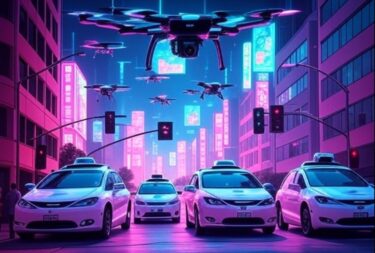Spies will be spies: IARPA has been looking for ways to track and trace people and things for a long time: perspective
US intelligence research funding arm IARPA is looking to autonomously re-identify objects from video sensor collections and map their movements with a new research program.
The US Intelligence Advanced Research Projects Activity (IARPA) will hold a proposers day for its anticipated Video Linking and Intelligence from Non-Collaborative Sensors (Video LINCS) program on February 7.
According to the announcement:
“The Video LINCS program aims to develop novel capabilities to autonomously re-identify objects across diverse video sensor collections and map all objects to a common reference frame”
Re-identification (ReID), according to IARPA, means “the process of matching the same object across a video collection, to determine where the object appears throughout the video.”
For the Video LINCS program, “ReID technologies will initially be developed for specific object classes that are known in advance, such as people and vehicles, and ultimately extent to all objects in the video footage without advance knowledge of specific object types.
“The capability to autonomously remap object locations from individual camera reference frames to a single common reference frame will also be developed.”
In the end:
“IARPA seeks technical approaches that will facilitate autonomous reID in an open-world seeing where there is no advance knowledge of the sensors, scene, content or video collection geometries”
For a spy agency, the ability to track objects from one video camera to another, or from various sensors to others, would have its advantages, such as tracking vehicles of interest or monitoring suspicious packages or activities.
This technology can also be used to track and trace people, which might help law enforcement catch criminals or help spies thwart their adversaries’ plans.
At the same time, the tools and techniques coming out of Video LINCS could also be abused in cases of stalking, profiling, or harassing if ever they fell into the wrong hands or if they were to be used by public or private entities for nefarious purposes.
IARPA has been looking for ways to track and trace people and things for a long time; that’s what spy agencies do.
In 2021, IARPA director Catherine Marsh said that IoT devices were a growing source of data collection for US Intelligence to learn the intent of its adversaries.
Last year, IARPA announced its “Hidden Activity Signal and Trajectory Anomaly Characterization (HAYSTAC) program, which aims “to develop systems capable of modeling population movement patterns around the globe” using AI and sensors connected to the Internet of Things (IoT) and smart cities.
In 2022, IARPA green-lit its Smart Electrically Powered And Networked Textile Systems (SMART ePANTS) program that aims to weave hidden spy tech such as cameras, microphones, and geolocation sensors into clothing with potential civilian, military, and law enforcement use.
In 2019, IARPA launched its Activities in Extended Video (ActEV) Prize Challenge to help camera operators quickly identify what exactly people are doing in video footage.
That same year, IARPA announced its Biometric Recognition and Identification at Altitude and Range (BRIAR) program to accurately ID people from drones and rooftops by fusing multiple biometric signatures, such as facial recognition and gait recognition.
When you combine all of IARPA’s track and trace efforts, many not mentioned here in this article, what you get is a massive system of surveillance that is supposed to be used against American adversaries.
But these same technologies could easily be weaponized against the citizenry, especially if the label “extremist” is ever invoked.
Spies will be spies.
Image by fanjianhua on Freepik












